Madhabi Mukherjee
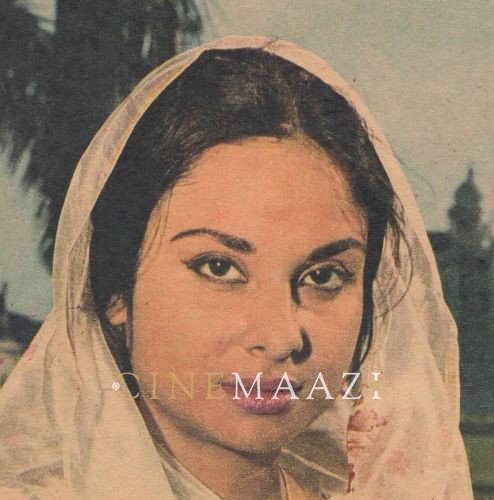
Subscribe to read full article
This section is for paid subscribers only. Our subscription is only $37/- for one full year.
You get unlimited access to all paid section and features on the website with this subscription.
Not ready for a full subscription?
You can access this article for $2 , and have it saved to your account for one year.
- Real Name: Madhuri Mukherjee
- Born: 10 February, 1942 (Calcutta, Bengal Presidency)
- Primary Cinema: Bengali
- Spouse: Nirmal Kumar
Celebrated for immortalising Satyajit Ray’s masterpiece Charulata (1964) on screen, in what is considered one of the greatest performances of all time in Indian cinema, Madhabi Mukherjee is known for her noteworthy performances in critically acclaimed Bengali films such as Ray’s Mahanagar (1963), Ghare Baire (1984), and Kapurush (1965); Mrinal Sen's Baishey Shravan (1960) and Calcutta 71 (1972); Ritwik Ghatak's Subarnarekha (1965); Biraj Bou (1972) by Manu Sen; Strir Patra (1972) by Purnendu Patri; Ganadevata (1978) by Tarun Majumdar; Tapan Sinha’s Bancharamer Bagan (1980); Utpalendu Chakrabarty’s Chokh (1982) and Chhandaneer (1989); and Rituparno Ghosh’s Utsab (2000). However, a section of critics believe that even if Charulata was the only role she ever played, she would still have secured her place among the greats of Bengali cinema; such was the extent of her impact! The characters she essayed symbolise an era when India was discovering a world of free spirit, with cinema reflecting unfettered creativity as well as the true depth of tradition. Her performance in Dibratrir Kabya (1970) won her the National Film Award for Best Actress. She turned director with the NFDC-funded drama Atmoja (1999), starring Jisshu Sengupta and Indrani Halder.
Born Madhuri Mukherjee on 10 February, 1942, she was brought up by her mother—her parents had separated as her family moved to Calcutta from Bangladesh. Owing to their financial situation, she had to start working at a young age and began acting in plays. Working on stage with greats such as Chhabi Biswas, Sisir Bhaduri, Ahindra Choudhury, Nirmalendu Lahiri, she performed in plays like Naa and Kalarah. Films had beckoned early and she joined the industry at the age of eight, debuting as a child artiste in Kankantala Light Railway (1950), directed by Premendra Mitra. She went on to impress as an adult actress in the Mrinal Sen directorial Baishey Shravan (1960). She essayed the role of a teenaged girl who marries a middle-aged man in the film which is set in a village of Bengal, against the backdrop of the infamous famine of 1943. The film captured their marriage, which initially thrives, but is then rent asunder by circumstances such as World War II and the Bengal famine. It ends on a sombre note with the wife committing suicide.
She made an impact again in Ritwik Ghatak’s Subarnarekha which released in 1965, though it was made in 1962. A complex film, it portrayed the socio-economic crisis in Bengal from 1948-1962 post partition. It explored how the circumstances eroded basic human integrity. She essayed the role of Sita, younger sister of Ishwar (Abhi Bhattacharya) who turns prostitute only to discover that her first customer is her own estranged brother. She goes on to commit suicide.
In 1963, she appeared in her first Satyajit Ray directorial - Mahanagar. She would later reveal that it was the first woman-centric screenplay she had ever witnessed. As Ray read the entire story to her during their meeting, she realised that she would be essaying a central character and not one that was secondary to the main male character as she had customarily done thus far in film and on stage. The film saw her essay the role of Arati, who takes up work as a saleswoman owing to financial challenges that beset her family. While her many-membered joint family is staunchly against the idea of a working woman, her job of going door to door selling knitting machines introduces her to a whole new world. She forms new bonds, even as her own status in the family rises; more so when her husband (Anil Chatterjee) loses his job. She stands up not just for herself; when her Anglo-Indian friend Edith’s services are unfairly terminated, she quits her job in protest. Her performance drew applause. Film critic Roger Ebert hailed her performance, stating, “She is a beautiful deep, wonderful actress who simply surpasses all ordinary standards of judgment.”
The pinnacle was reached soon after with her performance in Ray’s Charulata (1964), which is widely considered to be his greatest film alongside the Apu trilogy. Based on Tagore’s The Spoilt Nest, it revolved around a bored and neglected housewife in Victorian Calcutta of the 1870s who gets attracted to her husband’s cousin Amal (Soumitra Chatterjee). She went on to immortalise Charulata, Tagore’s iconic lonely wife from his novella Nastanirh, living the role, simultaneously setting a benchmark for Tagore heroines.
Incidentally, while her character in Charulata has largely become her identity, she herself maintained that she resonated more deeply with Arati from Mahanagar. “For Arati, her home was her world before she ventured out. But the process transforms her into someone for whom the world outside becomes her home. It wasn’t tough to understand Arati for a woman of my generation, whose views were sure home-bound yet, strong with streaks of empathy. In fact, it was not tough to understand any of the characters I played because they reflected the ethos of the period,” she later shared.
Interestingly, she would also maintain that she didn’t consider her character Charulata in any way more special for her than Arati, or Sita of Ritwik Ghatak’s Subarnarekha, or Supriya of Dibaratrir Kabya (1970), for which she won the National Award. “To me, my characters are like my children,” she averred. Another character that remains close to her heart is the one she essayed in Tapan Sinha’s Aandher Periye (1973). Playing a woman who has trouble with her eyesight, the character had considerable potential to make a point but wasn’t well-received.
Kapurush (1965), her third and last film with Ray, revolved around a screenwriter Amitabha Roy (Soumitra Chatterjee), whose car breaks down in a small town. He stops over at the home of a local resident, Bimal Gupta (Haradhan Bannerjee) and his wife Karuna (Madhabi Mukherjee). Karuna and Amitabha had been romantically involved in the past; a fact which Bimal is unaware of. Despite a predictable outcome, she made an impact in her performance, portraying her turmoil under her apparent indifference to Amitabha’s attempts to reconnect with her.
While holding the filmmakers she had worked with in high esteem, she revealed that while Ray would tell her to feel herself in what he had written, Ghatak shaped her into the character he wanted her to play. It showed the stark difference in the approaches of these filmmaking greats.
Becoming a leading star in the Bengali commercial film industry, she went on to feature in substantial films such as Calcutta ’71 (1972), Biraj Bou (1972), Streer Patra (1972), Ganadevata (1978), Bancharamer Bagan (1980), Chokh (1982), Chhandaneer (1989) and Utsab (2000). However, the critical highs achieved with her films with Ray and Ghatak were never to be reached again.
Choosing to stay loyal to Bengal cinema alone, she declined all offers for films from other language cinema. She passed on a role in Raj Kapoor’s Mera Nam Joker (1970), which went on to be played by Simi Garewal.
She made her debut as director with the NFDC-funded Atmoja (1999), starring Jisshu Sengupta and Indrani Halder. Based on a screenplay she had penned, it revolved around Ranbir and Mitra, who have been divorced for quite some time. Their daughter, Polly, a college girl who stays with the father, seems to harbour within herself a deep-seated resentment towards the mother who has married again. Ranbir had all along kept her away from Mitra, but once Polly is forced to stay with her mother, the antipathy which Polly has for her finds expression in various ways and she is out to shock her mother. However, the film did not get the publicity it deserved. Later, she wanted to make a film based on Mahasweta Devi’s short story, Sanichari; however, there was no financier for it nor for the story she conceived on test tube babies.
Continuing to work in television, she featured in serials such as Ishti Kutum, Hiyar Majhe, Kusum Dola, Gachkouto, and Nokshi Kanthar Maath.
Among the awards she received over the course of her career are WBFJA Lifetime Achievement Award, Filmfare East Lifetime Achievement Award, National Film Award for Best Actress for Dibratrir Kabya, BFJA Award for Best Actress for Charulata, BFJA Award for Best Actress for Dholgobinder Karcha, BFJA Award for Best Actress Award for Joradighir Chowdhury Paribar, and BFJA Award for Best Actress Award for Dibaratir Kabya.
With the passing decades, she keenly felt the dying of culture and cinema in Bengal. She entered politics, driven by the urge to help the workers who had lost their jobs after the Star theatre was gutted in a fire. She contested against Buddhadeb Bhattacharjee in the 2001 Assembly elections on a Trinamool ticket. However, she later decided to quit politics though she continues to speak on social causes. She also served on the board of Prasar Bharati.
She married actor Nirmal Kumar, and is a mother of two and a grandmother. Her philosophy to life and work is inspired by that of Swami Vivekananda’s outlook - whatever you do, do it with care. She penned her autobiography Ami Madhabi in 1995.
References
https://upperstall.com/profile/madhabi-mukherjee/
https://www.thehindu.com/entertainment/movies/in-conversation-with-madhabi-mukherjee-who-immortalised-satyajit-rays-charulata/article21572509.ece
Born Madhuri Mukherjee on 10 February, 1942, she was brought up by her mother—her parents had separated as her family moved to Calcutta from Bangladesh. Owing to their financial situation, sh
-
Filmography (5)
SortRole
-
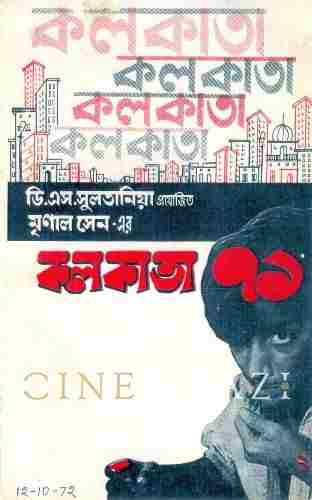
Calcutta 71 1971
-
Subarnarekha 1965
-
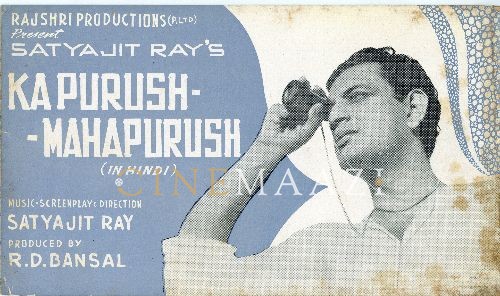
Kapurush Mahapurush 1965
-
Suvarna Rekha 1962
-
Baishey Shravana 1960
-



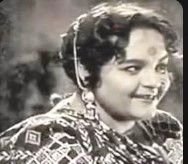
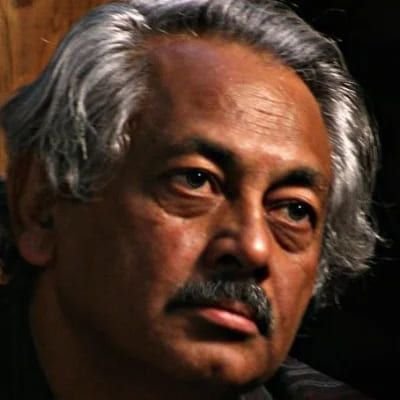
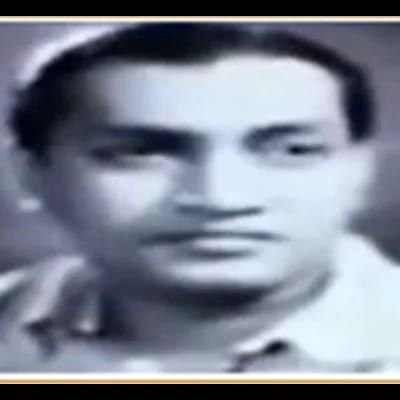
.jpg)



